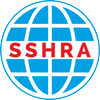
Nokulunga Mbona
Corvinus University of Budapest, Hungary
In this paper, I examine the underlying relationship between exchange rate and prices in South Africa, this phenomenon is termed the Exchange Rate Pass-Through (ERPT). Available empirical literature on aggregate level paints an informative and validating picture of the declining ERPT to consumer price index in South Africa. The literature is still insufficient as there are few studies on disaggregated data. Subsequently, the main objective of the study is to bridge this gap, by investigating ERPT to consumer prices of individual commodities of manufacturing sector namely; i. Clothing, and ii. Pharmaceutical products- for the period of 2010: M01 -2018: M06 in South Africa. Johansen Maximum cointegration and a vector error correction modelling methodology are employed in obtaining the purposes of the study. The obtained results reveal a low long-run pass-through to consumer prices of clothing accounted for 26 percent. While the long run pass through to CPI for pharmaceutical products was as high as 44 percent. The heterogeneous pass through results found among different individual component of the manufacturing sector is useful in formulating the consumer price index forecast, which is an essential role of central banks with inflation targeting framework.
Keywords
Exchange Rate Pass-Through, VEC Model, Disaggregated CPI, Import Prices
Full Article is available at https://dx.doi.org/10.20319/pijss.2019.52.433453





